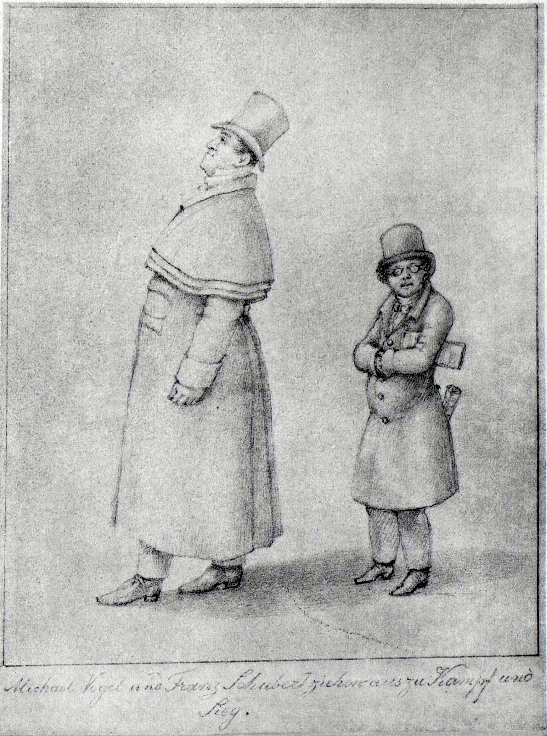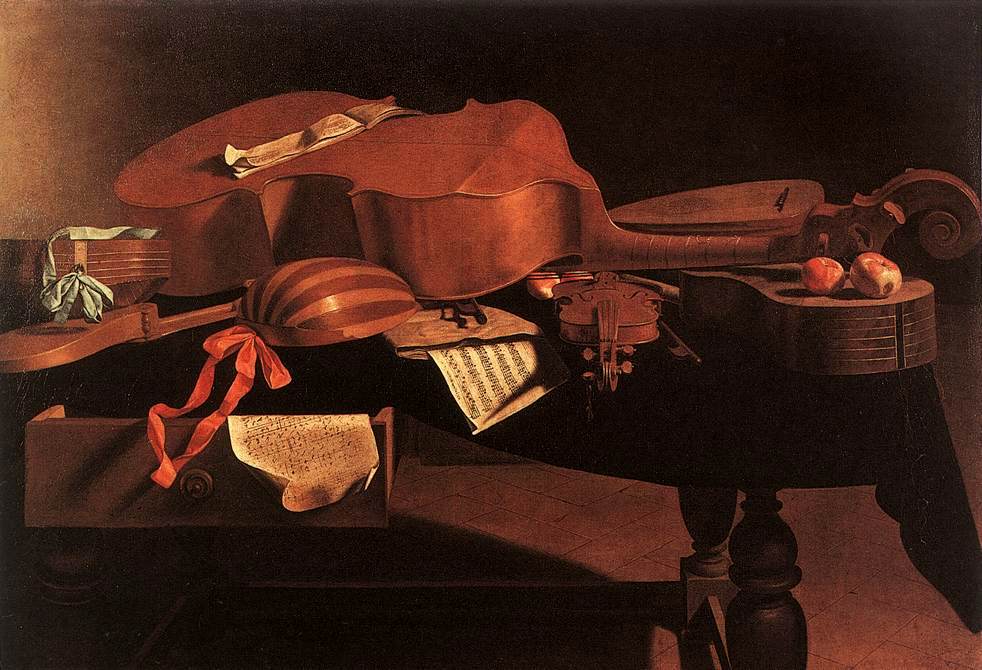|
Instrumentation (music)
In music, instrumentation is the particular combination of musical instruments employed in a composition, and the properties of those instruments individually. Instrumentation is sometimes used as a synonym for orchestration. This juxtaposition of the two terms was first made in 1843 by Hector Berlioz in his ''Grand traité d'instrumentation et d'orchestration modernes'', and various attempts have since been made to differentiate them. Instrumentation is a more general term referring to an orchestrator's, composer's or arrangement, arranger's selection of instruments in varying combinations, or even a choice made by the performers for a particular performance, as opposed to the narrower sense of orchestration, which is the act of scoring for orchestra a work originally written for a solo instrument or smaller group of instruments. Instrumental properties Writing for any instrument requires a composer or arranger to know the instrument's properties, such as: * the instrument's parti ... [...More Info...] [...Related Items...] OR: [Wikipedia] [Google] [Baidu] |
Music
Music is the arrangement of sound to create some combination of Musical form, form, harmony, melody, rhythm, or otherwise Musical expression, expressive content. Music is generally agreed to be a cultural universal that is present in all human societies. Definitions of music vary widely in substance and approach. While scholars agree that music is defined by a small number of elements of music, specific elements, there is no consensus as to what these necessary elements are. Music is often characterized as a highly versatile medium for expressing human creativity. Diverse activities are involved in the creation of music, and are often divided into categories of musical composition, composition, musical improvisation, improvisation, and performance. Music may be performed using a wide variety of musical instruments, including the human voice. It can also be composed, sequenced, or otherwise produced to be indirectly played mechanically or electronically, such as via a music box ... [...More Info...] [...Related Items...] OR: [Wikipedia] [Google] [Baidu] |
Glissando
In music, a glissando (; plural: ''glissandi'', abbreviated ''gliss.'') is a wikt:glide, glide from one pitch (music), pitch to another (). It is an Italianized Musical terminology, musical term derived from the French ''glisser'', "to glide". In some contexts, it is equivalent to portamento, which is a continuous, seamless glide between notes. In other contexts, it refers to discrete, stepped glides across notes, such as on a piano. Some terms that are similar or equivalent in some contexts are slide, sweep bend, smear, rip (for a loud, violent glissando to the beginning of a note), lip (in jazz terminology, when executed by changing one's embouchure on a wind instrument), plop, or falling hail (a glissando on a harp using the back of the fingernails). On wind instruments, a scoop is a glissando ascending to the onset of a note achieved entirely with the embouchure, except on instruments that have a slide (such as a trombone). Notation The glissando is indicated by following the ... [...More Info...] [...Related Items...] OR: [Wikipedia] [Google] [Baidu] |
Charles Rosen
Charles Welles Rosen (May 5, 1927December 9, 2012) was an American pianist and writer on music. He is remembered for his career as a concert pianist, for his recordings, and for his many writings, notable among them the book '' The Classical Style''. Life and career Youth and education Charles Rosen was born in New York City on May 5, 1927, to a Russian-Jewish immigrant couple, Irwin Rosen, an architect, and Anita Rosen ( Gerber), a semiprofessional actress and amateur pianist. Charles began his musical studies at age 4 and at age 6 enrolled in the Juilliard School. At age 11 he left Juilliard to study piano with Moriz Rosenthal, and with Rosenthal's wife, Hedwig Kanner. Rosenthal, born in 1862, had been a student of Franz Liszt. Rosenthal's memories of the 19th century in classical music were communicated to his pupil and appear frequently in Rosen's later writings. (For instance, in ''Critical Entertainments'', Rosen offers a memory from Rosenthal concerning how Brahms ... [...More Info...] [...Related Items...] OR: [Wikipedia] [Google] [Baidu] |
Piano Trio No
A piano is a keyboard instrument that produces sound when its keys are depressed, activating an action mechanism where hammers strike strings. Modern pianos have a row of 88 black and white keys, tuned to a chromatic scale in equal temperament. A musician who specializes in piano is called a pianist. There are two main types of piano: the grand piano and the upright piano. The grand piano offers better sound and more precise key control, making it the preferred choice when space and budget allow. The grand piano is also considered a necessity in venues hosting skilled pianists. The upright piano is more commonly used because of its smaller size and lower cost. When a key is depressed, the strings inside are struck by felt-coated wooden hammers. The vibrations are transmitted through a bridge to a soundboard that amplifies the sound by coupling the acoustic energy to the air. When the key is released, a damper stops the string's vibration, ending the sound. Most notes hav ... [...More Info...] [...Related Items...] OR: [Wikipedia] [Google] [Baidu] |
Schubert
Franz Peter Schubert (; ; 31 January 179719 November 1828) was an Austrian composer of the late Classical period (music), Classical and early Romantic music, Romantic eras. Despite his short life, Schubert left behind a List of compositions by Franz Schubert, vast ''oeuvre'', including more than 600 ''Lieder'' (art songs in German) and other vocal works, seven complete symphonies, sacred music, operas, incidental music, and a large body of piano and chamber music. His major works include "Erlkönig (Schubert), Erlkönig", "Gretchen am Spinnrade", and "Ave Maria (Schubert), Ave Maria"; the Trout Quintet, ''Trout'' Quintet; the Symphony No. 8 (Schubert), Symphony No. 8 in B minor (''Unfinished''); the Symphony No. 9 (Schubert), Symphony No. 9 in C major (''Great''); the String Quartet No. 14 (Schubert), String Quartet No. 14 in D minor (''Death and the Maiden''); the String Quintet (Schubert), String Quintet in C major; the Impromptus (Schubert), Impromptus for solo piano; the S ... [...More Info...] [...Related Items...] OR: [Wikipedia] [Google] [Baidu] |
Beethoven Violin Sonata Op 96, First Movement, Bars 1-23
Ludwig van Beethoven (baptised 17 December 177026 March 1827) was a German composer and pianist. He is one of the most revered figures in the history of Western music; his works rank among the most performed of the classical music repertoire and span the transition from the Classical period to the Romantic era. His early period, during which he forged his craft, is typically considered to have lasted until 1802. From 1802 to around 1812, his middle period showed an individual development from the styles of Joseph Haydn and Wolfgang Amadeus Mozart, and is sometimes characterised as heroic. During this time, Beethoven began to grow increasingly deaf. In his late period, from 1812 to 1827, he extended his innovations in musical form and expression. Born in Bonn, Beethoven displayed his musical talent at a young age. He was initially taught intensively by his father, Johann van Beethoven, and later by Christian Gottlob Neefe. Under Neefe's tutelage in 1783, he published his fir ... [...More Info...] [...Related Items...] OR: [Wikipedia] [Google] [Baidu] |
Violin Sonata No
The violin, sometimes referred to as a fiddle, is a wooden chordophone, and is the smallest, and thus highest-pitched instrument (soprano) in regular use in the violin family. Smaller violin-type instruments exist, including the violino piccolo and the pochette, but these are virtually unused. Most violins have a hollow wooden body, and commonly have four strings (sometimes five), usually tuned in perfect fifths with notes G3, D4, A4, E5, and are most commonly played by drawing a bow across the strings. The violin can also be played by plucking the strings with the fingers (pizzicato) and, in specialized cases, by striking the strings with the wooden side of the bow (col legno). Violins are important instruments in a wide variety of musical genres. They are most prominent in the Western classical tradition, both in ensembles (from chamber music to orchestras) and as solo instruments. Violins are also important in many varieties of folk music, including country music, bl ... [...More Info...] [...Related Items...] OR: [Wikipedia] [Google] [Baidu] |
Beethoven
Ludwig van Beethoven (baptised 17 December 177026 March 1827) was a German composer and pianist. He is one of the most revered figures in the history of Western music; his works rank among the most performed of the classical music repertoire and span the Transition from Classical to Romantic music, transition from the Classical period (music), Classical period to the Romantic music, Romantic era. His early period, during which he forged his craft, is typically considered to have lasted until 1802. From 1802 to around 1812, his middle period showed an individual development from the styles of Joseph Haydn and Wolfgang Amadeus Mozart, and is sometimes characterised as heroic. During this time, Beethoven began to grow increasingly Hearing loss, deaf. In his late period, from 1812 to 1827, he extended his innovations in musical form and expression. Born in Bonn, Beethoven displayed his musical talent at a young age. He was initially taught intensively by his father, Johann van Bee ... [...More Info...] [...Related Items...] OR: [Wikipedia] [Google] [Baidu] |
Baroque Music
Baroque music ( or ) refers to the period or dominant style of Classical music, Western classical music composed from about 1600 to 1750. The Baroque style followed the Renaissance music, Renaissance period, and was followed in turn by the Classical period (music), Classical period after a short transition (the Galant music, galant style). The Baroque period is divided into three major phases: early, middle, and late. Overlapping in time, they are conventionally dated from 1580 to 1650, from 1630 to 1700, and from 1680 to 1750. Baroque music forms a major portion of the "Western art music, classical music" Western canon, canon, and continues to be widely studied, performed, and listened to. The term "baroque" comes from the Portuguese word ''barroco'', meaning "baroque pearl, misshapen pearl". Key List of Baroque composers, composers of the Baroque era include Johann Sebastian Bach, Antonio Vivaldi, George Frideric Handel, Georg Philipp Telemann, Domenico Scarlatti, Claudio Monte ... [...More Info...] [...Related Items...] OR: [Wikipedia] [Google] [Baidu] |
Bach Quoniam From Mass In B Minor - Bars 1-4
Johann Sebastian Bach (German: �joːhan zeˈbasti̯an baχ ( – 28 July 1750) was a German composer and musician of the late Baroque period. He is known for his prolific output across a variety of instruments and forms, including the orchestral ''Brandenburg Concertos''; solo instrumental works such as the cello suites and sonatas and partitas for solo violin; keyboard works such as the ''Goldberg Variations'' and ''The Well-Tempered Clavier''; organ works such as the ' and the Toccata and Fugue in D minor; and choral works such as the '' St Matthew Passion'' and the Mass in B minor. Since the 19th-century Bach Revival, he has been widely regarded as one of the greatest composers in the history of Western music. The Bach family had already produced several composers when Johann Sebastian was born as the last child of a city musician, Johann Ambrosius, in Eisenach. After being orphaned at age 10, he lived for five years with his eldest brother, Johann Christop ... [...More Info...] [...Related Items...] OR: [Wikipedia] [Google] [Baidu] |







